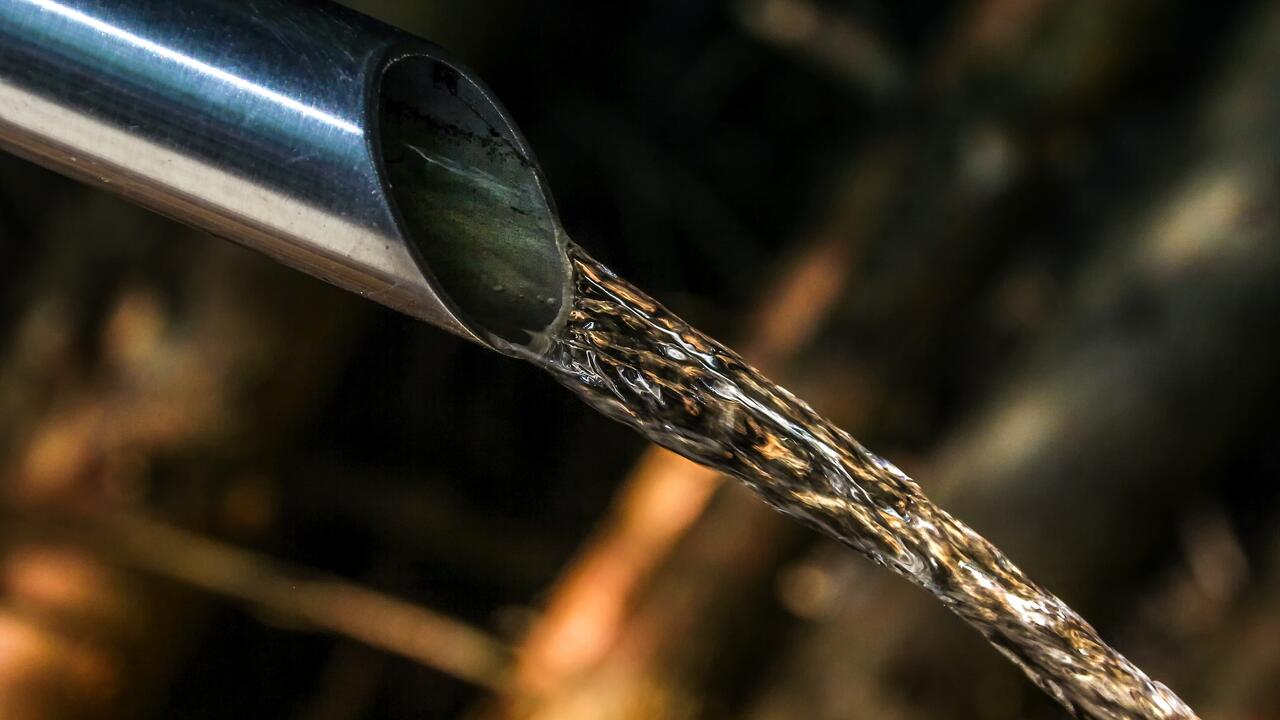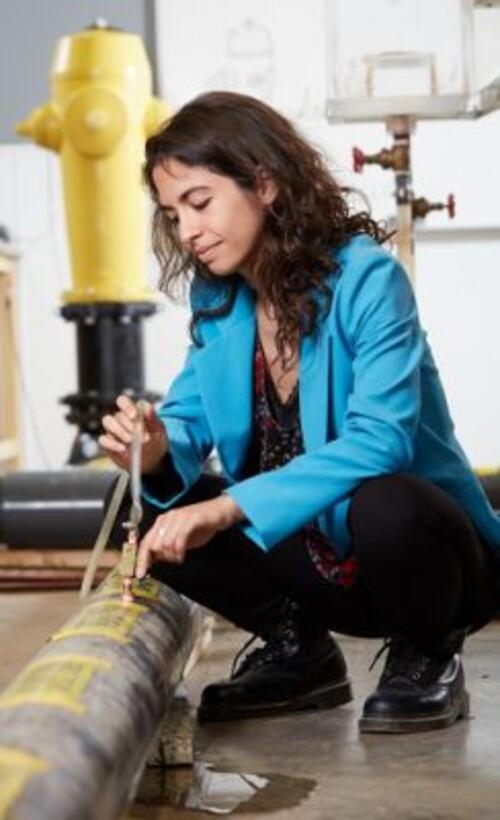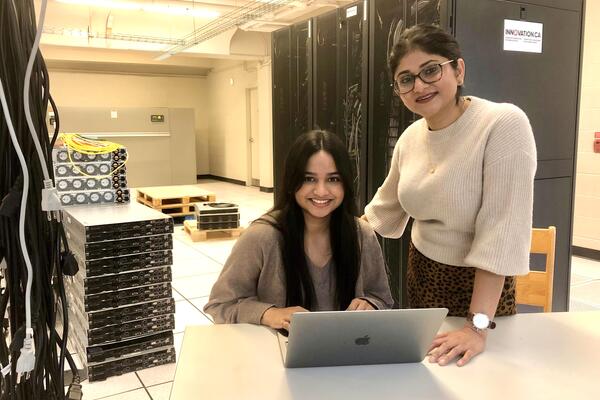
Leaky water pipes found early by sophisticated hydrant sensors
Sriram Narasimhan and his research group are working to identify vulnerable water pipes before they burst

Sriram Narasimhan and his research group are working to identify vulnerable water pipes before they burst
By Kira Vermond Faculty of EngineeringIt starts with tiny cracks, fissures in buried water pipes that eventually burst and flood city streets, causing millions of dollars in damage.
That’s the scenario Sriram Narasimhan, a University of Waterloo civil and environmental engineering professor and Canada Research Chair, is trying to end with a novel monitoring system to identify vulnerable municipal water pipes before they become financial and environmental liabilities.
His project, which received just over $500,000 in Strategic Partnership Grant funding this year, could be a game-changer for infrastructure maintenance.

Doctoral student Roya Cody is a member of a University of Waterloo research team working to identify vulnerable water pipes before they burst.
Until now, cities have had to wait for leaks to become apparent – often in the form of floods – before taking action to fix them.
Narasimhan and his multidisciplinary team of professors and graduate students from civil engineering, computer science, math and earth sciences – as well as industry and government partners including C3 Water and the City of Guelph – are enhancing a monitoring device that uses sensors to continually collect data.
Their additions to the device are designed to identify leaks in a general region of a water system so inspection teams can be sent out to investigate.
“The advantage is it’s a lot cheaper and it’s permanent,” says Narasimhan. “We’re able to predict where a small leak is happening so the municipality can take preventative action.”
That capability will dramatically improve an existing device, now in limited use, that can be fitted to water hydrants in about half an hour without even taking them out of service. It currently only monitors water temperature and pressure.
“We really wanted to make it do more,” says Dennis Mutti, president of C3 Water, one of four companies behind development of the One Water device.
The group sought out Narasimhan for his expertise in areas including acoustic listening and vibration analysis, and has high hopes for a much more sophisticated prototype that could be on the market in about a year.
Mutti says there are enormous savings to be had by reducing the amount of water lost or wasted in municipal distribution systems, either by identifying small leaks before they get much worse, or detecting already significant leaks that nobody knows about.
The hardware itself looks deceptively simple, but Narasimhan’s work is a testament to the project’s internal complexity. His research barely touches on water at all, focusing instead on how to extract meaning from measurements and clarity from data.
“It’s not enough for us to measure things,” he says, stressing that deep knowledge of a water system’s physics is essential. “We want to be able to make meaningful, actionable decisions with that information.”
Narasimhan’s research has other potential applications, too, from detecting cracks in roadway overpasses and bridges to ensuring that kilometres of airport baggage conveyor systems function at capacity.
He isn’t surprised that industry partners come to Waterloo Engineering for help on projects.
Not only are researchers willing to work together in interdisciplinary teams, Narasimhan says, they have access to leading-edge equipment, labs and technician support. What’s more, the University’s reputation opens doors.
“There’s a level of credibility here,” he says. “At Waterloo we have such a strong engineering school that municipalities and industrial partners approach us to solve the world’s problems.”
After working with Waterloo researchers on several projects, Mutti readily agrees with that assessment.
“With the University involved, we have independent validation that this device is working,” he says, while also stressing the value of an intellectual property policy that makes it easy to do business. “It’s huge.”

Waterloo researcher Dr. Tizazu Mekonnen stands next to a rheometer, which is used to test the flow properties of hydrogels. (University of Waterloo)
Read more
Plant-based material developed by Waterloo researchers absorbs like commercial plastics used in products like disposable diapers - but breaks down in months, not centuries

Read more
Here are the people and events behind some of this year’s most compelling Waterloo stories

Engineering master's student Nayeema Nonta (left), one of the three paper authors, and her supervisor, Dr. Sirisha Rambhatla, in a large server room with the computer power needed to develop their new LLM training technique. (University of Waterloo)
Read more
Waterloo researchers develop highly efficient AI training system that paves the way for cheaper, greener “intelligent partners”
Read
Engineering stories
Visit
Waterloo Engineering home
Contact
Waterloo Engineering
The University of Waterloo acknowledges that much of our work takes place on the traditional territory of the Neutral, Anishinaabeg, and Haudenosaunee peoples. Our main campus is situated on the Haldimand Tract, the land granted to the Six Nations that includes six miles on each side of the Grand River. Our active work toward reconciliation takes place across our campuses through research, learning, teaching, and community building, and is co-ordinated within the Office of Indigenous Relations.